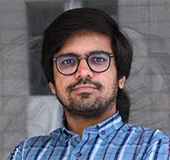-
CENTRES
Progammes & Centres
Location
ISIS, as an ideology and group, has also attracted many crossovers: ideologically radicalised, predominantly youth, leaving behind more regional and hyper-local entities to join ISIS’s brand of pan-globalist jihad is a trend that continues even today.

The past half a decade has been tumultuous. A continuing global recovery from the pandemic. Geopolitical flashpoints such as wars in Ukraine and Gaza. The US left Afghanistan in 2021 as part of an “exit” deal with the Taliban and maintaining minimum forces in both Iraq and Syria to counter the Islamic State (ISIS or Daesh in Arabic), signalling the end of the “war on terror”.
This, however, does not mean that the threat of terrorism is over, or even diminished. At best, attention has moved to more pressing matters of the day, until the next attack. The recent arrest of four Sri Lankan citizens in Ahmedabad, Gujarat, piques interest.
The Gujarat Anti-Terror Squad (ATS) arrested the four people for allegedly having links to ISIS — more specifically the Afghanistan-Pakistan-based Islamic State Khorasan (ISKP) — and travelling to India with intent to conduct terror attacks. The Sri Lankans were reportedly moving on the orders of the pseudonymous Pakistani handler “Abu Pakistani”. Sri Lanka’s security agencies also arrested another alleged local handler, Pushparaja Osman. The accused also reportedly explained that they were previously associated with the Sri Lankan extremist outfit National Thowheeth Jamath (NJT).
ISIS is not a group commonly equated for its presence in Sri Lanka, where over 70 per cent of the population is Buddhist. Muslims constitute less than 10 per cent and are a minority. But in 2019, several explosions ripped across the island nation’s capital, targeting churches and upscale hotels. Over 260 people were killed, and ISIS took responsibility, without providing any evidence of directly supporting the act of terror.
ISIS is not a group commonly equated for its presence in Sri Lanka, where over 70 per cent of the population is Buddhist.
Immediately after the Easter attack, links between the terrorists and certain entities in India’s southern states were highlighted. The leader of the Easter bombings ring, Zahran Hashim, was reportedly in touch with individuals in India via social media. Indian security agencies have since dismantled several self-styled pro-ISIS groupings across the country, but some much more specifically in the south.
Over the years, India has also taken back individuals from Gulf states who have been involved in extremist activities, including in favour of ISIS. A level of translucency remains on how these individual cases were approached legally. Much like other countries, many accused of supporting banned outfits like ISIS eventually were released from custody due to lack of evidence presented to the courts, or investigations hitting a dead end.
The four arrested individuals from Ahmedabad and their history with NJT is not an anomaly. The decay of ISIS Central since 2018-19, which was at its territorial and ideological peak in Iraq and Syria under Abu Bakr Al Baghdadi, has not meant the group’s influence has debilitated. In fact, it has only been subsumed more aggressively by regional affiliates of the Islamic State, from those in Africa to the likes of Islamic State Khorasan operating in the political and theological crevasses between Afghanistan and Pakistan. While the regional wilayats look to exert more influence and power alike, ISIS central itself is also consistently looking to rebuild, forcing the US, for example, to maintain a minimal but visible military deployment in both Iraq and Syria as part of its anti-ISIS mission.
But ISIS as an ideology and group has also attracted many crossovers: ideologically radicalised, predominantly youth, leaving behind more regional and hyper-local entities to join ISIS’s brand of pan-globalist jihad is a trend that continues even today. For example, ISKP’s cadre base is ethnically diverse, ranging from Tajiks and Uzbeks to Uyghurs and Pashtuns. A few Indians have also been known to have joined the group. Most recently, an Indian-origin man from Kerala was arrested in the southern Afghan province of Kandahar, the Taliban’s ideological home. Sanaul Islam made his way across the Tajikistan-Afghanistan border, reportedly in an attempt to join ISIS.
An Indian-origin man from Kerala was arrested in the southern Afghan province of Kandahar, the Taliban’s ideological home.
Localised terror groups have much clearer political aims than say a pan-Islamist group such as ISIS. Unless these narrow political aims are shared in the same manner and depth, some radicalised, particularly those in their youth, tend to look for bigger and broader aims to satiate their ideological extremism. In this case, ISIS continues to represent, for some attracted to the group a globalist war for the protection of Islam.
This is represented through ISIS propaganda, where it criticises not only states like Israel, the US, and India for what they perceive as anti-Muslim agendas, but also aims Arab monarchies, and even the Taliban in Afghanistan, for working closely with states and entities perceived as being anti-Islam. For example, in its latest propaganda video release, ISKP has criticised the Taliban for taking developmental help from the United Nations and associated entities.
The Sri Lanka example highlights the disparity between the terror attacks that get appropriate international attention and those that don’t. A noted scholar of terrorism, Professor Rohan Gunaratna, recently wrote that Sri Lanka and its religious leaders and elites need to come to terms that there is an underbelly of radicalisation in the country.
The views expressed above belong to the author(s). ORF research and analyses now available on Telegram! Click here to access our curated content — blogs, longforms and interviews.

Kabir Taneja is a Deputy Director and Fellow, Middle East, with the Strategic Studies programme. His research focuses on India’s relations with the Middle East ...
Read More +